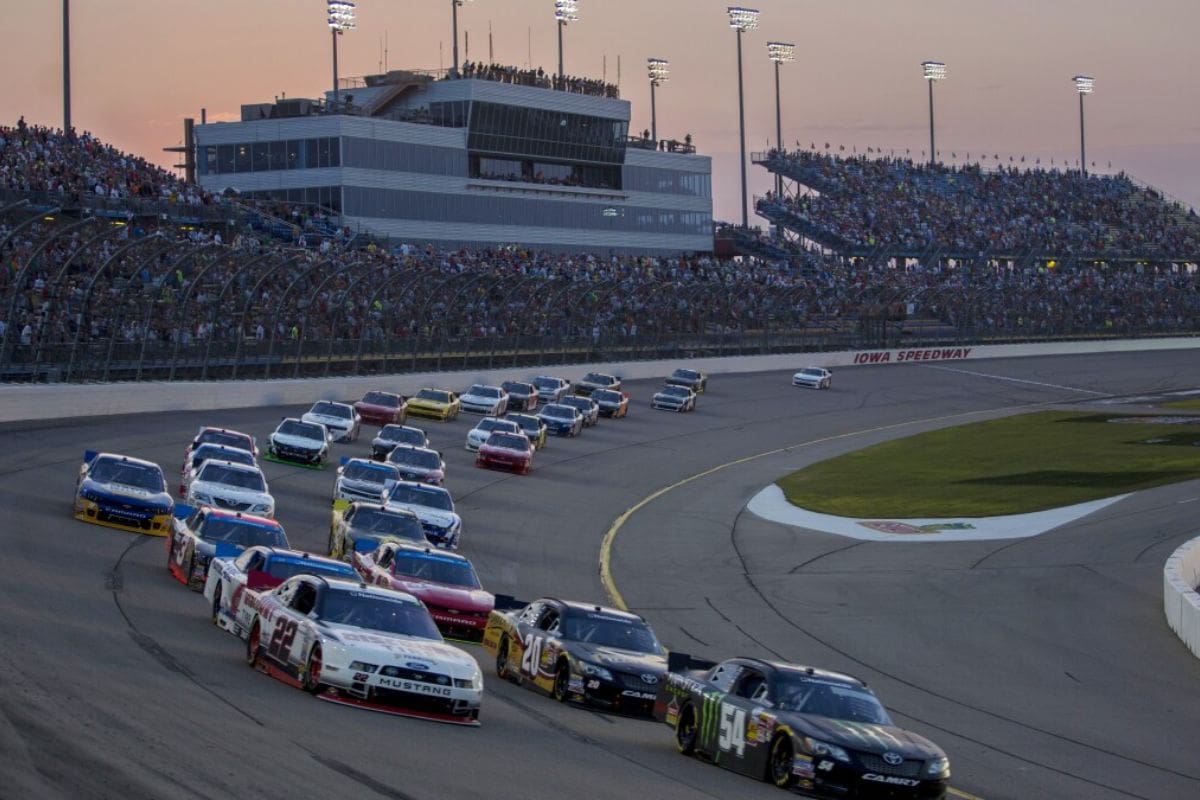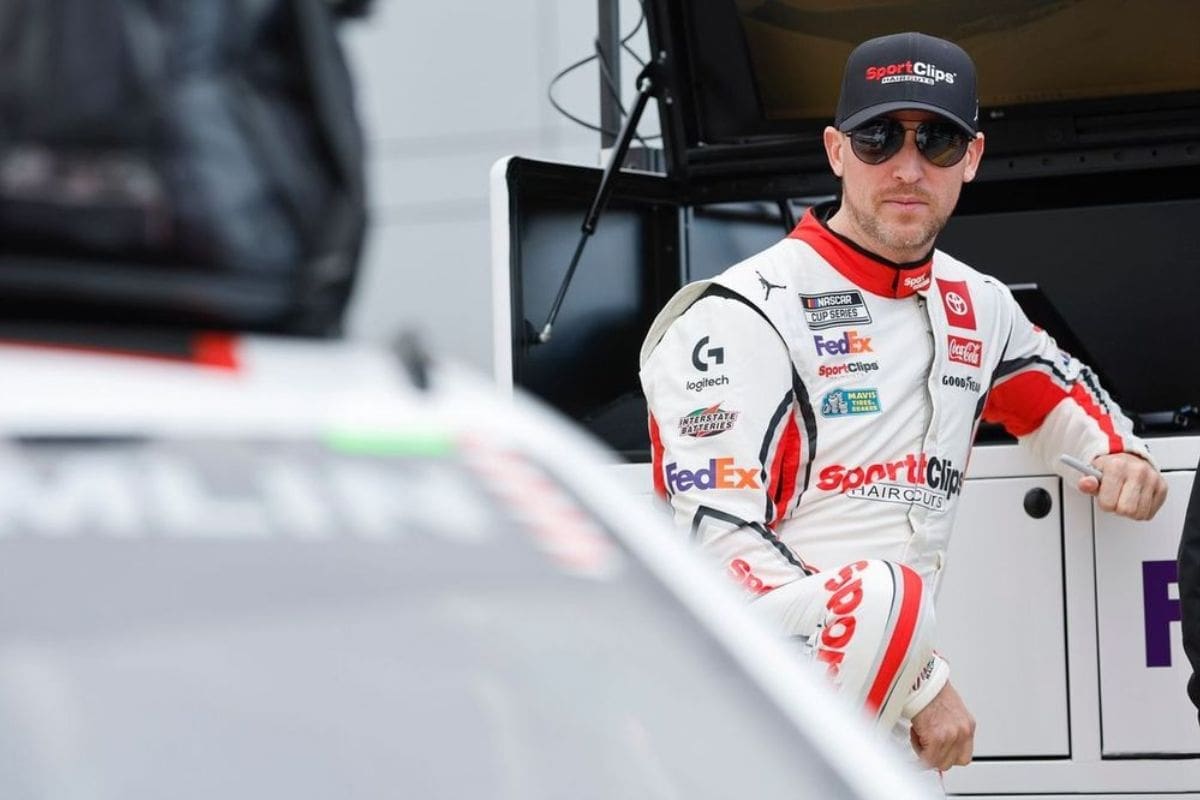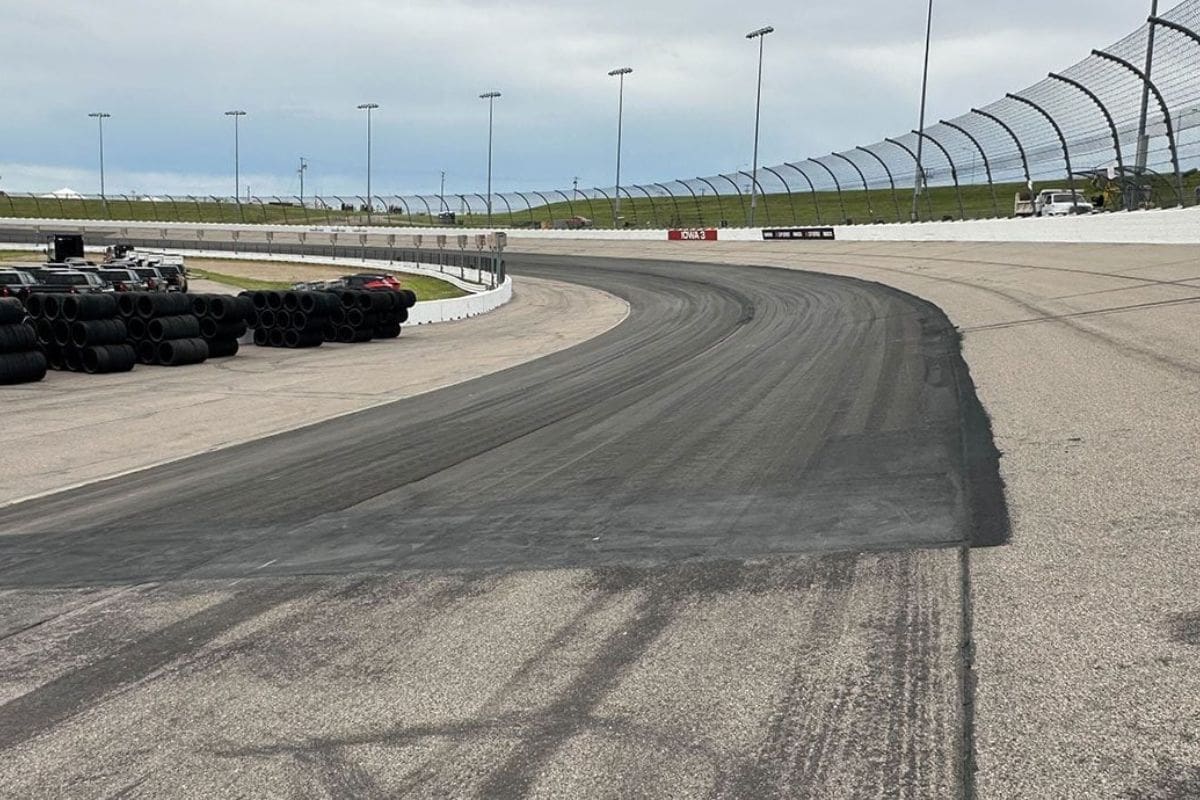Denny Hamlin Admits Defeat: Denny Hamlin‘s recent ordeal at Iowa Speedway emphasizes the harsh unpredictability of motorsport. A series of mechanical and strategic missteps gradually took away at his competitive edge, resulting in a collision that shattered any hope for a good finish. The emotional strain was palpable as Hamlin, renowned for his resilience, openly admits his defeat. This moment highlights the relentless challenges drivers face but also invites a deeper examination of the factors that led to this unraveling. What specific mechanical issues effect his car, and how did they influence his race strategy?
Key Highlights
- Denny Hamlin’s race was severely impacted by mechanical failures and a mid-race collision.
- Hamlin struggled with track position and gradually lost pace throughout the race.
- A collision involving Daniel Suarez and Kyle Larson further compromised Hamlin’s race.
- Multiple pit stops to fix damage were largely ineffective, leading to a 24th place finish.
- The series of setbacks and mechanical issues took a significant emotional toll on Hamlin.
Diverse Fortunes at Repaved Iowa Speedway
The recent repaving of Iowa Speedway revealed a striking problem in driver performances, with seasoned veterans and former winners capitalizing on the new surface while others, including Denny Hamlin, struggled to find their footing. This problem in success rates highlights the intricate subtleties that a repaved track can impose on competitors.

Drivers with a historic knack for Iowa’s short track seemed to adapt quickly, utilizing their experience to navigate the fresh asphalt with an almost intuitive precision.
Conversely, the rear half of the field, which surprisingly included the seasoned Denny Hamlin, found the transformation far more turbulent. Hamlin, piloting his No. 11 Toyota, experienced a series of mechanical and strategic hiccups that plagued his performance throughout the race. These issues resulted in the final stage, where his inability to adapt to the new surface became evident. The repaving’s implications were profound, altering the dynamics and favoring those who could timely recalibrate their strategies.
A detailed analysis of the race data highlights a pattern: those who excelled had an adept understanding of the track’s changed grip levels and banking angles, allowing for more aggressive, yet controlled movements. This was not merely a matter of driving skill but also the adaptability of the racing teams in recalibrating car setups to suit the revamped conditions.
Hamlin’s Reflections on Iowa Performance
Reflecting on his experience at Iowa Speedway, Denny Hamlin openly acknowledged the obstacles and letdowns that highlighted his performance. Despite early optimism fueled by his past short-track victories at Bristol and Richmond, Hamlin’s aspirations quickly dissipated as the race unfolded. The No. 11 car, projected by many as a strong contender, struggled to maintain competitive speed, ultimately sinking into the 30s.
Hamlin’s reflections on the race reveal a narrative fraught with disappointment and frustration. A promising start was tainted by a series of unfortunate events that compounded his woes:
- Mechanical Failures: After experiencing a blown engine at Sonoma Raceway, similar mechanical issues plagued Hamlin at Iowa, severely impairing his vehicle’s performance.
- Track Position: Despite a valiant effort, Hamlin only managed to gain five points in Stage 2, reflecting the struggle to secure a favorable track position amid fierce competition.
- Mid-Race Setback: The early stages of the race saw Hamlin’s vehicle gradually losing pace, ultimately relegating him to the rear of the pack.
- Final Stage Collision: A catastrophic melee in the final stage dashed any remaining hopes, encapsulating the day’s frustrations.
- Emotional Toll: The series of setbacks took a significant emotional toll on Hamlin, evident in his post-race reflections.
Hamlin’s Podcast Reflections
During his weekly ‘Actions Detrimental’ podcast, Denny Hamlin openly discussed the sense of helplessness he felt while grappling with the myriad challenges at Iowa Speedway. Hamlin’s reflection was imbued with both frustration and an analytical approach, as he frankly described his constrained circumstances on the track. ‘I was trying to race but I was in restraints,’ he lamented. His words conveyed a palpable sense of being trapped, unable to exploit his skill to its full potential.
“I was trying to race but I was in handcuffs. You know, I can’t go any faster; if I could go any faster, I would’ve gone a lap down in the first place. But the leader passes me, I’m like, ‘ (sigh) Just do everything you can to stay in this lucky dog spot.’ And I didn’t.” – Hamlin
Despite the evident disappointment, Hamlin’s insights also revealed a seasoned racer’s ability to find silver linings amidst adversity. He highlighted the strategic tactics that allowed him to navigate the unfavorable conditions, noting, ‘But we were able to circle around.’ This tactical awareness ensured that he remained in the mix, despite the compromised performance. Hamlin’s recounting of the race was not merely a lament but a detailed analysis of the race dynamics and his response to them.
“But we were able to wave around. So it was one of those races where the finish probably would have been way worse had the cautions not fell in the correct spot when we pretty much all day long…you know, I was able to wave when I needed to, I was able to get the lucky dog when I needed to.” – Hamlin
"My car stopped turning… and I just kept dropping, and dropping, and dropping." 🐢
Listen to the newest episode of Actions Detrimental with @dennyhamlin now! pic.twitter.com/JOvqSx9jjU
— Dirty Mo Media (@DirtyMoMedia) June 17, 2024
The emotional tone of Hamlin’s reflections emphasized his deep commitment to the sport and his relentless pursuit of excellence. His ability to dissect the race and identify critical moments where he managed to salvage his position speaks to his profound understanding of racing strategy.

Race Incident and Finish
Catastrophe struck on lap 261 when Daniel Suarez’s collision with Kyle Larson set off a chain reaction, ultimately ensnaring Denny Hamlin and exacerbating the issues plaguing his already ailing No. 11 car. The Hendrick Motorsports driver spun out, creating a chaotic scene that brought Hamlin’s already tenuous race to a grinding halt. Despite multiple repair pit stops, the damage was insurmountable, leaving Hamlin to wrestle with a vehicle that was markedly slower than the rest of the field.
- Suarez’s initial contact: A seemingly minor incident that had major consequences.
- Larson’s spin: A dramatic turn that set the stage for the ensuing chaos.
- Hamlin’s entanglement: An unavoidable collision that intensified the No. 11 car’s mechanical woes.
- Multiple pit stops: Efforts to remedy the damage that proved largely futile.
- Eking out a top-25 finish: A demonstration of Hamlin’s resilience and strategic insight.
The collision not only exacerbated Hamlin’s existing mechanical issues but also introduced new challenges. Hamlin displayed remarkable resilience, managing to finish 24th by strategically trapping down other lapped cars.
“When our car got destroyed, we were way slower than the field. But we still finished 24th because we trapped down other lapped cars for the whole race. And then my car was so slow after the crash, it allowed me to slowly bleed those spots as the race went on, and I didn’t finish in the 30s.” – Hamlin
This performance, while far from ideal, highlights Hamlin’s tactical skills despite adverse conditions.
Tire Dilemma at Iowa
The tire dilemma at Iowa emerged as a critical issue, greatly impacting the race outcome and driver safety. This was evidenced by the alarming number of tire blow-outs experienced by multiple drivers during both practice sessions and the final Cup race. This predicament highlighted significant technical challenges, with Goodyear‘s project to improve tire fall-off backfiring disastrously after a promising start at Bristol.
During Friday’s practice session alone, five drivers—Christopher Bell, Austin Cindric, Ross Chastain, Ty Gibbs, and Tyler Reddick—suffered tire blow-outs. Such incidences not only disrupted the drivers’ preparations but also raised severe safety concerns. The situation further deteriorated during the final Cup race, where an astonishing seven cars experienced flat tires.
Denny Hamlin, in the heat of competition, expressed his frustration via radio, stating, ‘It’s like the tires are on backward.’ This comment encapsulated the bewilderment and distress felt by many drivers. Hamlin’s Joe Gibbs Racing (JGR) teammate, Martin Truex Jr., echoed the sentiment, suggesting that Goodyear should aim for even softer tire compounds.
“Still probably could go softer. I know Goodyear hates when we talk about it like that, but I still think that would be better.” – Truex
Despite these issues, Truex managed to secure a relatively better finish, landing in 15th place at the Iowa Corn 350. The tire failures at Iowa not only impacted the race but also highlighted a need for rapid and effective solutions from Goodyear. As drivers like Hamlin and Truex continue to vocalize their concerns, the spotlight remains on tire manufacturers to deliver safer, more reliable performance in future races.

News in Brief: Denny Hamlin Admits Defeat
The recent race at Iowa Speedway highlighted the multifaceted challenges faced by Denny Hamlin, including mechanical failures, track position struggles, and a pivotal mid-race collision. These setbacks collectively contributed to a disappointing 24th-place finish.
Hamlin’s reflections emphasize the emotional and professional impact of the incident, revealing the complexities and unpredictability inherent in motorsport. The race serves as a poignant reminder of the fine margins that differentiate success from failure in this highly competitive arena.
ALSO READ: Denny Hamlin Admits Iowa Mistake Despite Kyle Larson’s Support
